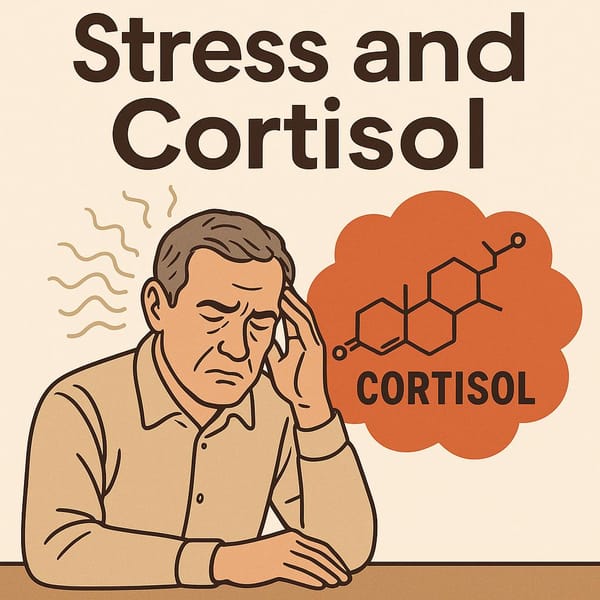What is Keto Breath? An In-Depth Guide to Health and Wellness
Keto Breath is caused by the release of acetone, a ketone body, during fat metabolism. Ideal for those on a ketogenic diet, it may also indicate undiagnosed issues like diabetes or nutrient deficiencies in non-keto individuals. Learn how to manage and prevent keto breath.

Introduction
“Keto Breath” is a term often associated with those following a Ketogenic (Keto) diet, a popular eating pattern that emphasizes high fat and very low carbohydrates. While some view this distinctive breath odor as a sign of successful fat metabolism, others may find it concerning—especially if they’re not intentionally following a strict diet. This comprehensive guide aims to clarify what keto breath is, why it occurs, and what it might mean if it appears in individuals not consciously practicing a ketogenic lifestyle.
The Ketogenic Diet and the Mechanism Behind “Keto Breath”
1. Understanding the Ketogenic Diet
- Ketogenic (Keto) Diet: A dietary approach focusing on consuming high amounts of fat (around 70–80% of total caloric intake), very low carbohydrates (less than 5–10% of total calories), and moderate protein.
- When carbohydrates are drastically limited, the body shifts from relying on glucose to burning fat, producing “ketone bodies” in the liver—such as acetone, beta-hydroxybutyrate, and acetoacetate.
- Acetone is primarily responsible for the distinctive odor often referred to as “keto breath.” It may smell somewhat fruity or similar to nail polish remover.
2. How Keto Breath Develops
- In ketosis, the liver produces ketone bodies as it metabolizes fat.
- Some ketone bodies—especially acetone—are released through exhalation.
- This leads to the characteristic “keto breath,” signaling that the body is in a state of ketosis.
- Research published in Nutrients (see Nutrients Journal) notes that keto breath frequently indicates a fully functional fat-burning process.
3. Common Misconceptions about Keto Breath
- Not everyone experiences noticeable keto breath. Individual metabolism and sensitivity to odors vary.
- Keto breath is usually temporary, often prominent when first entering ketosis.
- For individuals with type 1 diabetes, a similar odor can be a sign of diabetic ketoacidosis (DKA), a serious condition requiring immediate medical attention.
Keto Breath in Health-Conscious Individuals
1. A Sign of Effective Fat Burning
- People intentionally following a ketogenic diet for fat loss often consider keto breath an indicator of successful ketosis.
- It suggests that the body has shifted to burning stored fat, thereby maintaining stable insulin levels.
2. Impact on Daily Life
- Bad Breath: The fruity or chemical-like odor may be off-putting to those around you, even if it doesn’t seem strong to the individual.
- Oral Health: Maintaining good oral hygiene—brushing, flossing, and using mouthwash—can help mitigate unwanted odors.
- Physical Side Effects: Early-stage keto adaptation may cause “keto flu” symptoms (headaches, fatigue, dizziness) that subside once the body adjusts.
3. Potential Benefits
- Weight Loss: Keto breath typically signifies an active fat metabolism, potentially aiding long-term weight management.
- Stable Blood Sugar: Individuals with insulin resistance can benefit from a lower-carb diet, though professional consultation is advised.
- Brain Energy: Some research suggests ketones, such as beta-hydroxybutyrate, may provide alternative fuel for the brain, though evidence is mixed.
Keto Breath in Non-Keto Individuals: What Does It Mean?
If you’re not deliberately reducing carbohydrate intake and still experience a “keto-like” odor on your breath, consider these possible causes:
1. Severe Caloric Restriction or Undereating
- If you’re skipping meals or not eating enough carbohydrates, your body may inadvertently enter ketosis.
- Signs can include fatigue, dizziness, or nausea.
- Addressing undernutrition is crucial to avoid long-term health complications.
2. Early Signs of Diabetes
- Type 1 Diabetes or poorly controlled diabetes can lead to keto breath due to improper glucose utilization.
- If accompanied by extreme thirst, frequent urination, or rapid weight loss, consult a medical professional immediately.
3. High Stress or Prolonged Fasting
- Chronic stress disrupts hormonal balance, potentially triggering fat metabolism and ketone production.
- Intermittent fasting or unintentional skipping of meals can also induce mild ketosis.
4. Nutrient Deficiencies
- Consuming large amounts of protein and fat while neglecting carbohydrates and micronutrients can lead to an unplanned ketogenic state.
5. Alcohol Consumption
- Some alcoholic beverages might initially provide carbs, but excessive drinking can impair liver function and disrupt glucose production, resulting in fat breakdown and ketone release.
- Over time, this may contribute to keto breath if the body resorts to alternative energy sources.
Warning: If you’re uncertain about the cause of an unusual breath odor, or experience additional symptoms, seek medical advice.
Managing and Preventing Keto Breath
1. Stay Hydrated
- Drinking sufficient water helps flush out excess ketones via urine.
- Aim for 8–10 glasses daily, or more if you exercise regularly.
2. Maintain Good Oral Hygiene
- Brush teeth at least twice a day, floss regularly, and use a non-alcoholic mouthwash to reduce dryness and odor.
- Some people also practice oil pulling (e.g., with coconut oil) as an additional step.
3. Adjust Macronutrient Intake
- Even on keto, incorporate low-carb vegetables (e.g., spinach, kale, broccoli) for essential vitamins and minerals.
- If you’re not following a strict keto plan yet have keto breath, increasing complex carbohydrates or balancing nutrient intake may resolve the issue.
4. Moderate Protein Intake
- While protein is essential for muscle maintenance, excessive amounts can convert to glucose via gluconeogenesis.
- Consult a dietitian or physician before making major dietary changes.
5. Regular Health Checkups
- If you suspect you have keto breath without following a keto diet, consider screening for diabetes or other conditions.
- Blood or urine ketone level tests can confirm if you’re in ketosis.
6. Exercise Mindfully
- Physical activity enhances circulation and overall metabolism, potentially alleviating mild ketone buildup.
- Be cautious not to overexert yourself, especially during initial adaptation periods.
Foods That May Help Reduce Keto Breath
- Leafy Greens: Spinach, kale, and broccoli supply fiber to aid digestion and may help reduce ketone buildup.
- Herbs and Spices: Ginger, garlic, and lemongrass offer antioxidant benefits and can support a healthy metabolism.
- Probiotic-Rich Foods: Yogurt or kefir with live cultures promote beneficial oral and gut bacteria.
- Flaxseeds or Chia Seeds: Provide fiber and omega-3 fatty acids for heart and brain health.
- Water or Herbal Teas: Green tea or chamomile tea contains antioxidants and may lessen breath odor.
Precautions and Health Tips
- Seek Professional Advice: Before starting a ketogenic diet—especially if you have underlying health conditions—consult a healthcare provider.
- Don’t Stop Medication Unilaterally: If you have diabetes or other conditions requiring medication, always adjust dosages under medical supervision.
- Monitor Symptoms: Severe keto breath alongside nausea, vomiting, or frequent urination could indicate ketoacidosis. Seek immediate medical attention.
- Check for Balance: Individuals with cognitively demanding jobs may need to tweak carb intake to maintain focus.
- Beware of Yo-Yo Effects: Transitioning off keto without sustainable lifestyle changes may lead to rapid weight regain.
Conclusion
Keto breath, or the distinctive “ketone” odor, doesn’t necessarily spell disaster. For those on a purposeful keto diet, it often signals effective fat burning and metabolic adaptation. However, if you’re not following keto and still notice a strange fruity or chemical scent on your breath, consider underlying factors like undereating, diabetes, stress, or nutrient imbalances.
The best way to handle keto breath is to maintain a well-rounded approach to health—adequate hydration, balanced nutrition, good oral hygiene, regular exercise, and routine medical checkups. Stay informed, and consult healthcare professionals for personalized guidance on whether or not a ketogenic lifestyle aligns with your goals and health status.
References
- Paoli A, Rubini A, Volek JS, Grimaldi KA. Beyond weight loss: a review of the therapeutic uses of very-low-carbohydrate (ketogenic) diets. European Journal of Clinical Nutrition. 2013;67(8):789–796.
- Masood W, Annamaraju P, Uppaluri KR. Ketogenic Diet. StatPearls [Internet]. 2022. Available at: NCBI Bookshelf
- American Diabetes Association (ADA). Symptoms of Diabetes. Link
- National Institute of Diabetes and Digestive and Kidney Diseases (NIDDK). Your Guide to Diabetes: Type 1 and Type 2. Link
- Mingrone G, et al. Medical nutrition therapy for diabetes mellitus: focusing on the past, present, and future aspects. Current Opinion in Clinical Nutrition and Metabolic Care. 2021
Disclaimer: This article is for informational purposes only and should not be considered medical advice. Always consult a qualified healthcare provider before making any significant changes to your diet or health routine.



